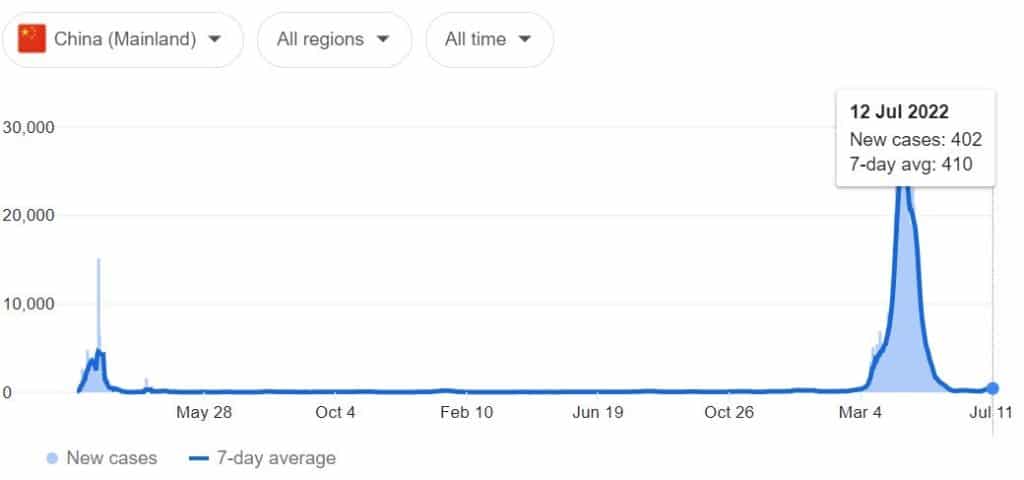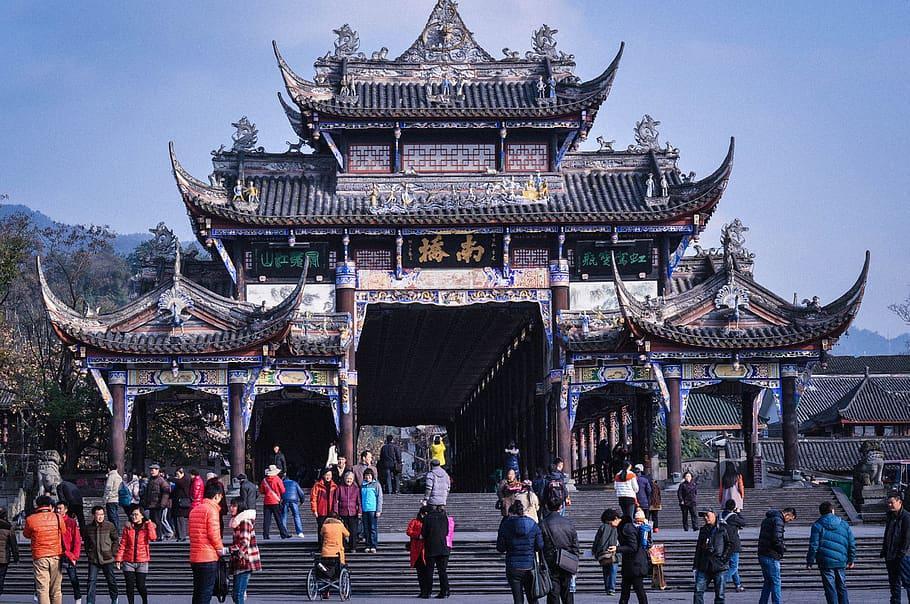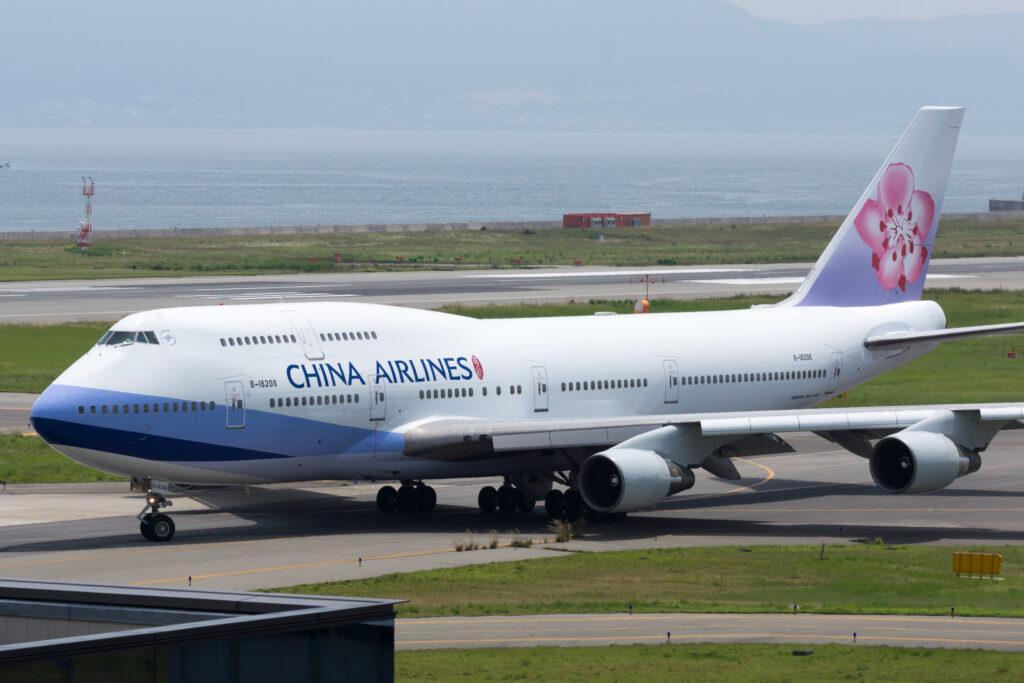China is not open for tourism, only national citizens and foreign nationals with valid residence permits and some special types of visas are allowed to enter.
All arrivals must agree to a 7-10 day quarantine and a variety of invasive COVID-19 tests. (See below).
Travelers arriving from countries where new strains of the virus have been discovered, such as the U.K. and South Africa, must take 4 nucleic acid tests. Their household members will also be required to take said tests.
Join our: Covid-19 Travel Advice & Support FB Group
Disclaimer: Travel restrictions and governmental regulations can change rapidly and the information below might be outdated within a few hours. Therefore, double-check all information with your embassy or on official websites. Traveling Lifestyle does not take any responsibility for your decision to travel.Suggested:
– Check out the full list of Asian countries reopening for tourism
China Reopening Borders – Latest Updates

July – China has reduced quarantine for international arrivals
As a first move toward easing its Covid-19 border controls, China has cut the length of the quarantine period for international visitors.
New rules established by the National Health Commission require visitors to mainland China to spend seven days at a facility under official control before being isolated for three days at home.
Prior to being let out of quarantine, travelers must still submit to routine testing and demonstrate a negative test result.
Read our full post: China Eases Quarantine Requirements For International Travelers As Of June 29
June – China resumes work or family reunion visas under strict conditions
This week, the embassy announced changes for international travelers, meaning a handful of nationalities will be able to apply for a work or family reunion visa for the first time since March 2020.
The lifting of the entry ban also applies to their family members, and they can also return to the country to work.
Until now, visas were issued only for “necessary economic” or “technological activities” or for “humanitarian reasons” such as mourning or visiting seriously ill relatives.
However, as of this month, dozens of Chinese embassies – including those in the United States, Canada, Indonesia, India, South Korea, and Australia – are available for this type of visa.
Those who have suffered a previous COVID-19 infection will have to take six PCR tests.
When is China likely to Reopen for Tourism?
International flights will gradually restart between 2023 and 2025, according to China’s “14th five-year plan,” for civil aviation development.
“Due to the current state of the pandemic,” the plan will be divided into two phases.
China will strengthen coronavirus prevention and control in 2022, focus on reforms, and establish more detailed support measures to help bolster recovery.
The years 2023-2025 will be a period of growth, with a focus on enhancing the local market, restoring the international market, and improving the level of opening up, according to the aviation industry media.
COVID-19 cases in China

Source
As of today, the country has reported 226,909 positive cases and 5,226 deaths.
China Reopening Borders – FAQs:
How to obtain a visa?

It is not enough to have a passport that is current and that it has at least six months left prior to expiring.
Travelers must also apply for an official permit (or a visa) with the Chinese Embassy in their native country and prove to have compelling reasons for traveling.
DO NOT TRAVEL TO CHINA WITHOUT A VISA. Anyone who tries to enter China right now with just a passport and no proper visa may be arrested, deported, or refused access.
Who is affected by China’s latest travel ban?
Basically, almost everyone who is not a Chinese national.
Foreign nationals visiting China for emergency reasons should still apply for special entry visas.
Restrictions upon arrival
All visitors must have:
Proof of negative COVID-19 PCR test, taken no more than 48 hours before departure.Valid VISA or residence permit.Undergo a 7-day quarantine upon arrival (at least). and 3 days of self-monitoring home.Undergo testing upon arrival and for release from quarantine travelers must agree to blood tests, as well as oral, nasal, and anal swab tests. (Source
Not allowed to “Just Pass Through” either
Passengers on planes from other countries that are not allowed entry into China because of the travel ban on certain territories may not treat China as a “just passing through” country, even when travelers are in an airport.
Keep this in mind if you need to take a connecting flight to get to another Asian or Pacific country.
Single flights

Another important fact about flying in and out of China is that it intends to stick with singular flights in and out of the country.
What this means is that a plane may bring you into the country, but your next flight out is the only flight out until the following week, two weeks, or more.
The idea, of course, is to restrict as much influx of foreigners into China and track any cases of COVID that may result from each plane coming in and the passengers on that plane.
This method of disease tracking is relatively smart, but it does complicate travel plans, even for dignitaries and the like. Plan to stay for some time, and then book well in advance for your flight out since single plane flights are all that you will find for a while.
Current mask requirement
Health authorities in China’s capital Beijing have been lifting the requirement for people to wear masks outdoors after the city reported several consecutive days without new cases.
This may change with no prior notice.
China Reopening Borders – Update Archives
June – China eases Shanghai lockdown after more than 8 weeks
After a two-month lockdown, the Chinese city of Shanghai, the country’s economic powerhouse and a global trade hub has eased covid restrictions.
“This is a day that we dreamed of for a very long time,” Shanghai government spokeswoman Yin Xin told reporters.
“Everyone has sacrificed a lot. This day has been hard-won and we need to cherish and protect it, and welcome back the Shanghai we are familiar with and missed.”
At least 650,000 residents will remain confined to their homes.
China’s general “zero Covid” policy remains in effect, and people who contract covid face quarantine or hospitalization.
May 24 – Airbnb is shutting down in China due to ongoing lockdowns
As reported by the BBC, all offers for homes and experiences in the country will be removed from the company’s website by the summer.
The company plans to inform employees in the country as early as May 24 in Beijing.
China has had some of the strictest covid restrictions in the world since 2020, making travel in and through the country extremely difficult.
Sources say Chinese travel abroad has been a bigger opportunity for Airbnb, and the company will focus on providing deals for Chinese travelers going abroad.
May 11 – China further tightens its Covid-19 restrictions
China has expanded its lockdown measures beyond Shanghai and Beijing, according to reports from European companies.
In addition, residents of the capital must produce a negative Covid-19 test to gain access to public spaces, a significant tightening of restrictions in Beijing.
Proof of a negative Covid-19 test is also required to board public transportation since last week.
It is not clear how long the new restrictions will last.
pril 27 – China to further reinforce Shanghai lockdown
While the rest of the world waited for China to announce the lifting of restrictive measures in Shanghai, the authorities decided to do just the opposite.
Electronic door alarms have been installed to prevent infected people from leaving as well as evacuating people to sanitize their homes.
All infected patients and close contacts are being taken to a government-run central quarantine facility, according to the Shanghai Municipal Government.
Beicai residents have been officially warned to pack their belongings and leave their closet doors open.
They were also instructed to leave their front doors open and to leave their pets at home.
pril 14 – China extends Shanghai lockdown to the entire city
After a new surge in covid cases, authorities have expanded the lockdown of Shanghai to include all 25 million residents.
Originally, the government had decided to impose different rules for the east and the west, leading many to believe China was relaxing its zero-covid strategy.
But now an indefinite ban applies to the entire city. Authorities have not yet announced a date when this lockdown will end.
March 29 – Shanghai to lock down millions as China explores changes to “Zero Covid” strategy
As a fresh wave of Covid-19 is spreading through China’s most important financial hub, resulting in the country’s largest number of cases since the pandemic began.
Authorities said the eastern side of the Huangpu River, which divides Shanghai, will be under lockdown from Monday through Friday. Similar restrictions will apply to the western side from April 1.
China’s National Health Commission has issued new instructions limiting the geographic scope of mass testing and requiring local governments to complete testing in each designated area within 24 hours.
According to experts, “this is an adjustment rather than a softening of Zero COVID. It shows that Beijing is trying to make testing less of a social and economic burden by making it more efficient, as opposed to limiting it.”
March 11 – China Registers 1,000 daily cases for the first time since the pandemic began
China has recorded over 1,000 new Covid-19 cases in multiple cities, the highest daily count since the pandemic struck.
This has forced authorities to put the northeastern province of Jilin under lockdown. Starting Friday, its 9 million residents will only be permitted to leave their homes for essential reasons. Likewise, all schools have also been closed in the financial hub of Shanghai.
Nearly 87% of China’s 1.4 billion inhabitants have received two doses of a Covid-19 vaccine, with some 40% of the population also receiving a booster shot.
Despite this, the government continues to refuse to set a reopening date.
February 1 – Chinese people have been advised not to travel to Beijing during the Winter Olympics
Some local spectators will be “invited” to events following strict COVID prevention measures “before, during, and after watching the Games,” which will be held from Feb. 4 to Feb. 20.
To avoid becoming infected with the virus, locals have been warned not to travel into Beijing from other parts of China.
As of Jan. 31, game organizers have reported 24 new COVID cases among Games-related staff, 16 of whom are athletes.
“[The Covid-19 situation] is generally within our expected controllable range. So the Games participants, including athletes, and the Chinese public do not have to worry,” said Huang Chun, deputy director-general of the committee’s Pandemic Prevention and Control Office.
January 17 – China might continue to be closed to international tourism at least until November 2022
According to a research report by Investment Bank Jefferies, China is expected to maintain its “zero-COVID” policy until after the National People’s Congress in November 2022, and possibly beyond.
While it was previously thought that China would reopen after the next Winter Olympics (Feb. 4-20), Jefferies analysts forecast the reopening date may be delayed to ensure the Chinese President gets reappointed to a historic third term with no external interruptions.
There is “a risk that [China’s zero-COVID policy] could continue into 2023 and possibly beyond,” said the research.
December 15 – Government tightens travel restrictions in East China as COVID-29 cases spike
Authorities have reimposed restrictions on outbound travelers in East China’s Zhejiang province due to a spike in COVID-19 cases.
To tackle the rise in cases, officials have placed some 70,000 people under self-isolation while other 465,000 will subject to various restrictions including health monitoring and bans on using public transportation.
“The shutdown of Zhejiang factories will impact on the supply chains of various sectors, especially fiber and textiles,” Zhaopeng Xing, senior China strategist at ANZ Research, told AFP.
November 30 – China has not announced further entry restrictions over Omicron variant
China will not be taking any “major action” to tackle the new Omicron variant, said Zhong Nanshan, a government adviser at a conference in Guangzhou last weekend.
The country has confirmed two cases of the “variant of concern” in Hong Kong so far, but Chinese public health experts have said they trust the country’s existing border control measures to contain the spread.
“China’s current rapid response and dynamic clearance strategy is capable of dealing with all types of new coronavirus variants,” said China’s most trusted expert on Covid-19 on social media.
November 18 – China might start reopening borders after the Winter Olympics, says a country’s top adviser
Closer collaboration between Washington, Beijing and the World Health Organization could help reopen China, said Henry Wang Huiyao, an adviser to China’s State Council at the Bloomberg New Economy Forum in Singapore.
“I hope that after the Beijing Olympics, we will see something happening,” Wang said.
“There’s a need for having that so we can facilitate travel, the movement of people, and even for Chinese government officials to visit other countries.”
China is gearing up for a number of important events, including the Olympic Games in February, which makes it necessary to ease some entry restrictions.
November 3 – China to cancel hundreds of flights to Beijing as COVID-19 restrictions tighten
Despite the fact that a number of Asian countries are abandoning the zero-covid policy due to its inefficiency, China stays steadfast.
Beijing’s health commission announced that residents who left the city for work or pleasure to places with confirmed cases should “postpone” returning, as per a CNBC report.
If China begins to lift restrictions once vaccination rates reach 85 percent as some officials have suggested, the country would not reopen for at least another year.
Lanzhou, a city of over 4 million people, was put under lockdown on Tuesday after only six new daily Covid-19 cases were recorded.
October 13 – China refuses to leave its zero-Covid approach
Countries like Singapore, New Zealand, and Indonesia that have tightly controlled the spread of the coronavirus for almost 2 years now, are gradually loosening restrictions as vaccination rates rise and governments attempt to reduce economic burdens.
But not China. At least not for now. In a recent interview, Chinese CDC chief Gao Fu stated that, while a new strategy is being considered, it is still too early to consider the disease endemic.
“We’re discussing China’s new strategy… “Everything is dynamic,” Gao explained. However, no mention was made about the potential date for international borders reopening.
September 10 – China’s interprovincial travel booking has increased up to 550% for mid-Autumn Festival
The Mid-Autumn Festival is somehow similar to Thanksgiving day in the United States or the harvest festivals held in Europe. Multiple tour booking platforms have reported an increase of up to 550% between Aug. 23 and Sept. 6.
On Trip.com Group’s Ctrip platform bookings increased by 365%. Other similar private companies have reported an increase of up to 550%.
This has only been possible thanks to the rather strict but undeniably effective containment measures China recently took to bring COVID-19 local transmission numbers back to zero.
Source: SCMP
September 23 – China orders 10 million citizens to get tested for COVID within the next 48 hours
That’s how China rolls when it comes to stopping the spread of the virus. Harbin citizens will need to stay home until Friday while getting tested for coronavirus after the Provincial Health Commission reported 13 new cases on Wednesday.
This outbreak does not seem to be linked to the recent Fujian surge a few weeks ago.
On that occasion, the government had citizens get tested for coronavirus up to 11 times in a short period of time.
All Covid-19 vaccinations have been suspended while the city proceeds with this mass testing.
Source: Reuters
ugust 16 – Locally transmitted COVID cases back to zero after last flare-up
China has recorded no new locally transmitted Covid-19 infections for the first time since its worst outbreak more than a year ago.
Criticized by many but praised for many more, China’s intensive and exhausting efforts to contain the spread had paid off.
The country had citizens get tested up to 12 times in one month in one city to ensure they catch all elusive cases. Severe quarantines and the closure of the world’s third-busiest port also played a role in eliminating the threat.
Source: Fortune
ugust 11 – China will reopen for tourism when a series of requirements are met, says government
China had to reimpose a number of COVID-19 restrictions impacting transport, tourism and other services following an outbreak in coronavirus cases.
The current outbreak has already spread to more than 15 China’s provinces resulting in more than 1,000 new cases, although the government considers there must be more.
More than 40 China officials have been punished for being unable to control the Delta variant in their territories.
When asked about a potential reopening date, a senior official from the Chinese Center for Disease Control and Prevention (CDC) said that “though there’s no timeline when China will lift border restrictions, the country will do so in the future after meeting a number of requirements.”
Source: Global Times
June 6 – China might not reopen borders to foreign visitors until 2022
A top Chinese health official has stated the country “can’t” reopen until they can determine how well vaccines work in a large number of individuals.
With almost 1.4 billion citizens, authorities know that any small outbreak can turn into a massive impossible-to-control one.
“I don’t think we’ve got to that point – if we try to open even when 60% or 80% of the population are vaccinated, it could still lead to a severe outbreak,” […] “It largely depends on the technical considerations, societal consensus and political concerns,” said Feng Zijian, the deputy Director-General of China’s Center for Disease Control and Prevention at a conference in Qingdao.
Then, at the current vaccination pace -which is indeed incredibly fast) only foreign nationals with valid residence permits and visas will be allowed entry in 2021.
(Source: Bloomberg)
July 27 – China to reintroduce lockdown from July 26 until further notice
China has reintroduced COVID-19 restrictions and mass testing in Nanjing, the capital of the eastern province of Jiangsu following the biggest spike in coronavirus cases in the last 7 months.
The plan is to contact-trace and get its 9.3 million residents tested to contain the spread of the Delta variant.
Residents must remain in lockdown from July 26 on, and non-essential businesses will not be allowed to operate.
It is uncertain how long these restrictions will remain in place.
Source: South China Morning Post
July 13 – China could resume travel bubble with Hong Kong soon, says HK Leader
Chief Executive of Hong Kong, Carrie Lam Cheng Yuet-ngor has announced that she expects to receive “positive instructions” on the date the border with mainland China can reopen, following a COVID-19 report she submitted to Beijing a few days ago.
According to the report, Hong Kong has not seen a single community-transmitted infection over the last 33 days. The official tally remains at 11,951 total cases and 212 deaths.
She also mentioned that no other conditions have been discussed about the border reopening so far.
On the other hand, in mid-May China’s cabinet announced that the second half of 2022 would be a realistic date to reopen the country.
Source: The Coronavirus Pandemic
July 1 – China could reopen a travel bubble with Hong Kong while tightening internal restrictions from July 1
Chinese health authorities have stated they could start a quarantine-free travel bubble with Hong Kong this month. This benefit would apply to business travelers only.
This potential reopening of “limited travel” will be tied to coronavirus activity in both countries.
“I think reopening the border with Hong Kong will [happen] sooner [than for international borders],” said Zhong Nanshan, a top respiratory expert from China.
At the same time, China tightened internal restrictions from July 1 onward. As of now, visitors with travel history to the U.K. will be denied entry regardless of their nationality, country of residence or vaccination status.
(Source: GardaWorld).
June 18 – China reopening suffering a major delay due to a COVID-19 outbreak and uneven vaccine distribution
Chinese authorities have stated the country will not reopen until most of their population is vaccinated since “any outbreak, it’s a massive outbreak.”
Well, a current outbreak of Covid-19 in southern China has impacted not only China’s reopening plans but also the distribution of shipped goods from the third and fifth largest ports in the world.
As of today, cities such as Beijing and Shanghai have fully inoculated almost 70% of their population. By contrast, Guangdong and Shandong have only vaccinated less than 20%.
“[China] is such a big country… Once any of its places open up, it will have a big impact on places that haven’t reached high vaccination levels,” said Feng Zijian, a researcher at the Chinese Center for Disease Control and Prevention.
(Source: Reuters)
The post China Is Closed For Tourism But Reduces Quarantine For International Arrivals appeared first on Traveling Lifestyle.
-----------------------------
By: Viktor Vincej
Title: China Is Closed For Tourism But Reduces Quarantine For International Arrivals
Sourced From: www.travelinglifestyle.net/china-reopening-borders-for-international-visitors-mid-august/
Published Date: Wed, 13 Jul 2022 19:12:00 +0000
Read More
 Privacy PolicyTerms And Conditions
Privacy PolicyTerms And Conditions
